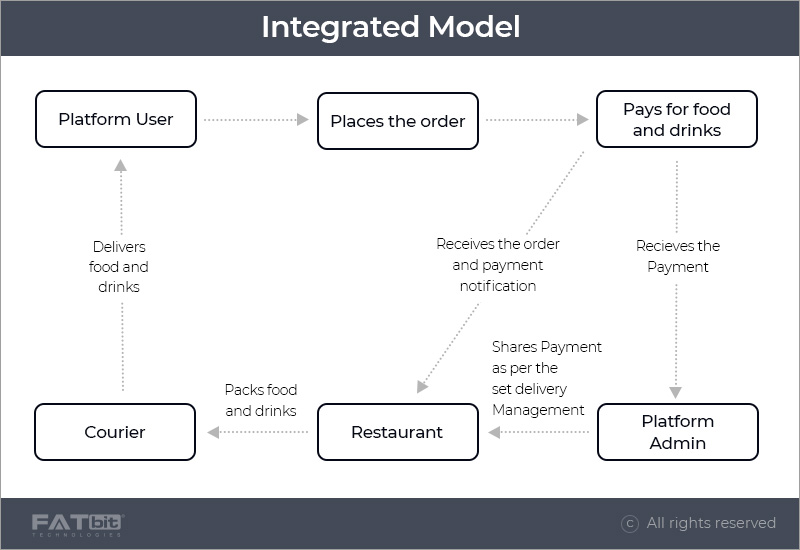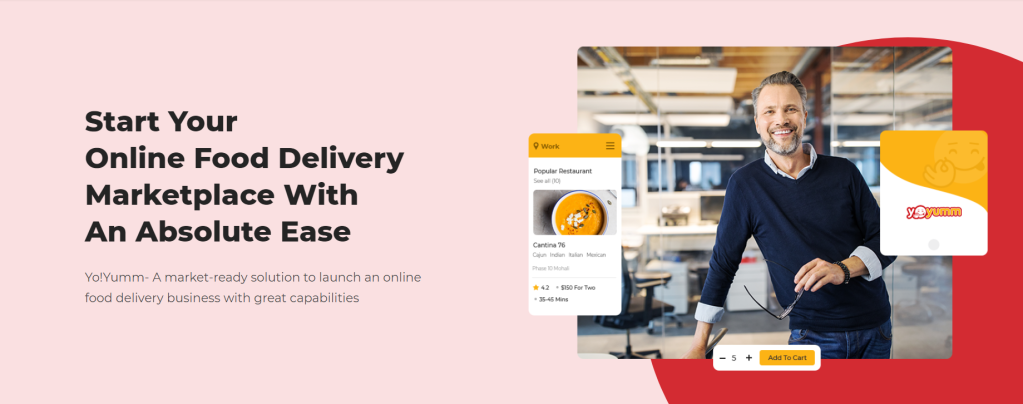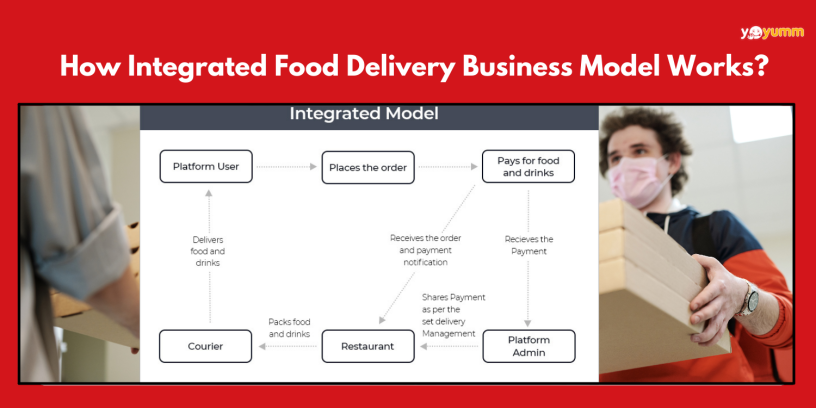The demand for online food delivery services is at a peak nowadays leading to the rising number of food delivery startup businesses. The food delivery market is one of the booming niches of the industry with a vast scope of growth. The offline food businesses are actively investing to digitize their operations and keep-up with the change in demand and the market scenarios.
The online food delivery business is a trending concept all across the globe. The businesses are incorporating a variety of unique selling points to become popular in the competitive market. But the question is what type of food delivery business model should one choose to start their business.
Keeping the change in customers’ preferences in mind, the Integrated food delivery business model is emerging as the most lucrative food delivery business model. To capture the untapped opportunities lying in the food delivery industry, you must choose the best-in-class solution that offers you a wide range of suitable features to launch your business.
What is Integrated Food Delivery Business Model?
The integrated food delivery business model is a type of aggregator business model.
Integrated Food Delivery Business Model is flexible and allows the admin of the food delivery platform as well as the restaurants registered to manage the delivery of the orders.
There are many restaurants that have their own delivery fleet and their only purpose to be on third-party food delivery platforms is to bring their offerings online. As per the integrated business model, the customers can order food from the third-part food delivery platform, and the delivery of the order placed can be taken care of by the restaurant or admin as per the agreement between the two parties.

How Integrated Food Delivery Business Model Works?
The workflow of the integrated food delivery business model is explained in detail by defining the roles of each stakeholder i.e. Admin, Merchant, Delivery Staff, and Customer.
Admin:
- The admin of the platform creates an account for delivery agents hired by him/her.
- The admin has the access to enable or disable the delivery service provided by the restaurants
- The admin has the authority to set the delivery charges for the deliveries done by the admin’s delivery agents
- The orders are broadcasted to all the delivery agents present in the range of the restaurants, which is set by the admin.
- when delivery is managed by the admin, he/she can manually assign the order to a particular delivery agent if the order is not accepted by any delivery person within the delivery range.
Merchant:
- The merchants can create an account for the restaurant’s delivery staff/agents
- The merchants can enable the self-delivery option to manage the deliveries on their own
- For the deliveries made by the restaurant’s delivery agents, the merchant can decide the delivery fee
- The restaurant owner can set the delivery range for their restaurants
- When the restaurant accepts the order, the order tracking status for the customer changes to “accepted.”
- When the order is prepared by the restaurant and is ready to be delivered, the restaurant updates the status of the order as “ ready for pick-up”
- Now, the restaurant owner is responsible to assign the order to a particular delivery agent in case no delivery staff accepts the order within a few minutes of the broadcasting time.
Delivery Staff:
- The delivery agents that are present in the delivery range of the restaurant get the notification about the available orders for delivery.
- Once the order is accepted by the delivery person, the order status is automatically changed to “In-Preparation”
- The delivery person to whom the order is assigned/ who accepts the order for delivery picks up the order after receiving the notification “ order is ready for pick-up”
- Once the order is picked up by the delivery person from the restaurant, the status of the order is updated to “order-picked up”
- The system sends a notification “ your order is on the way” once the delivery person covers half the distance to the customer’s place
- Once the order is delivered to the customer, the delivery person marks the order status as “Delivered”
Customers:
- Customers can track the order and delivery from the moment the order is accepted by the restaurant
Advantages of Integrated Food Delivery Business Model
- As a restaurant owner, the biggest advantage is that they do not have to rely on a third-party food delivery platform for order delivery as per the flexible delivery option
- This type of business model is best suitable for businesses having a chain of restaurants in a city with a delivery fleet of their own.
Suggested Read: Type of Food Delivery Business Models
Conclusion
Choosing the right business model for your online food delivery business is of utmost importance as the business model determines the workflow and efficiency of your operations to a great extent. The integrated model provides complete flexibility to meet the evolving food industry standards. This blog widely covers the work processes involved in the online food delivery businesses based on the integrated model.
To know more about “How to Start Online Food Delivery Business”

Connect with experts at:
https://www.yoyumm.com/how-to-start-food-delivery-marketplace.html

